Understanding and correctly following UK speed limit signs is not only essential to passing the driving theory test, but is equally important to remain safe on UK roads and remain on the correct side of the law.
Remember that in areas of street lighting (except on motorways), a speed limit of 30mph applies unless another speed limit is specifically signed.
All regulatory speed limit signs are circular, though a regulatory speed limit sign may be used in conjunction with other information, for example, placed within another sign. This section details frequently seen speed limit signs and speed limit / information sign combinations used on UK roads.
Road signs theory test quiz
Once you have studied the speed limit signs below and feel confident in your ability to know them, take the road sign test quiz
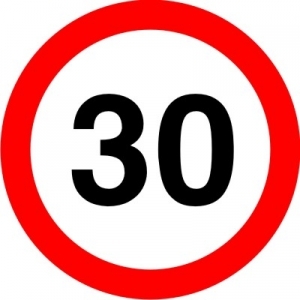
Speed limit sign
Speed limit signs display the maximum speed in miles per hour that it is legal to travel.
Repeater speed limit signs
Along with the larger version of a speed limit sign located at the start of a new speed limit, smaller repeater speed limit signs act as reminders along the route. 30 mph repeater signs are only used on roads without street lighting present.
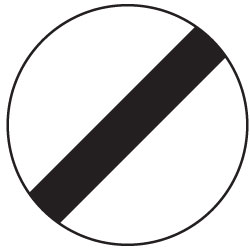
National speed limit sign
National speed limit signs define the speed limit for the types of road and class of vehicle being driven. National speed limit repeater signs are only used on roads with street lighting.
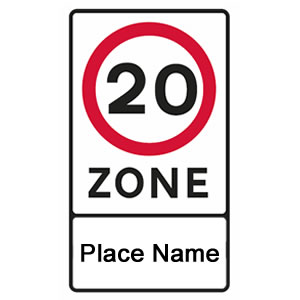
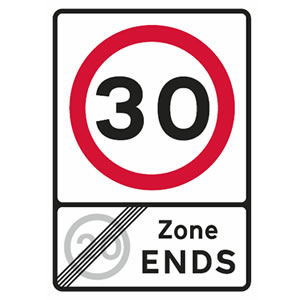
Traffic calming zones
Traffic calming zones are located in areas with a high level of pedestrians such a town centres or schools. The end of the 20 mph speed limit traffic calming zone sees the limit increased to 30 mph.
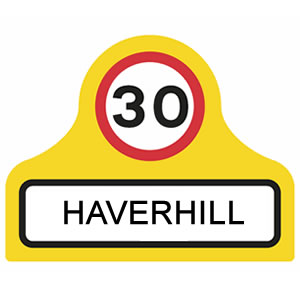
Start of a speed limit at the boundary of a town or village
Speed limit signs may be integrated into other signs. This example displays a towns name plate with the maximum speed limit.
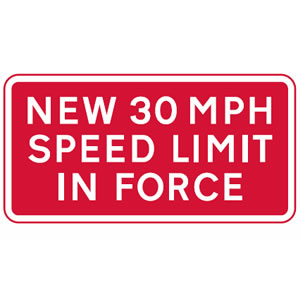
Temporary signs
Sign is placed at an area in a road where street lighting is located where a 30 mph speed limit originally ended and has now been extended. This temporary sign is used to inform drivers that the previous higher speed limit has been replaced by a 30 mph limit.
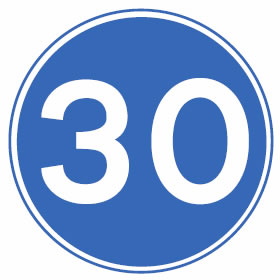
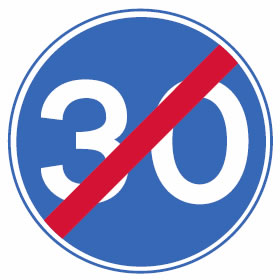
Minimum speed limits
Most UK roads do not impose a minimum speed limit. Those that do, utilize the minimum speed limits to keep traffic flowing and reduce congestion. See minimum speed limits and driving too slow for further information.
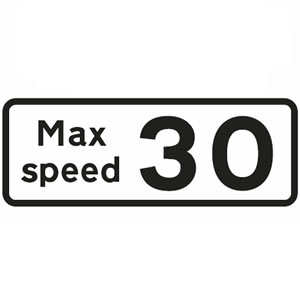
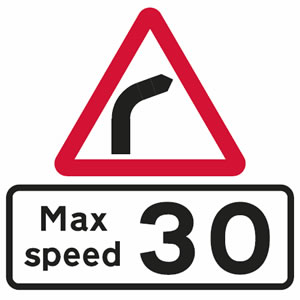
Recommended speed limits
Recommended maximum speed limits are used where a hazard is up ahead in the road. Circular speed limit signs as those above are regulatory, whereas these are recommended. Signs may be used in conjunction with a warning sign such as a bend to the right warning as shown.
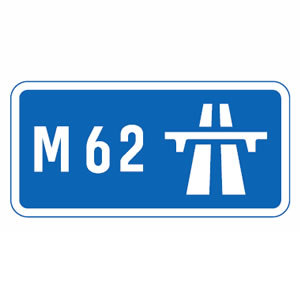
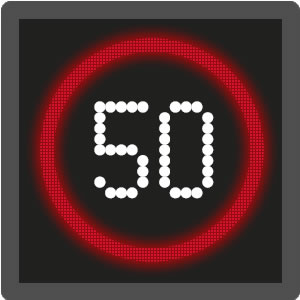
Motorway speed limit signs
This blue sign indicates the start of a motorway (M62 being the name of the road). Motorway regulations apply from here including the 70 mph motorway national speed limit, unless a different speed limit is signed. See motorways for further information on rules, regulations and motorway signs.
Certain motorways, notably those with Active Traffic Management (ATM) may enforce regulatory speed limits by use of light signals / signs either placed directly above each lane or to the side on the carriageway. The light signals represent the same red ring as conventional speed limit signs and may be enforced to reduce motorists speed due to bad weather conditions, such as fog.
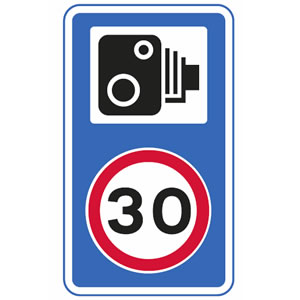
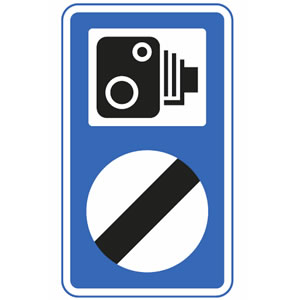
Speed limit camera and speed limit signs
Speed limit signs may be used with other warning such as speed cameras. The 30 mph speed limit is used on a lit road (where no repeater speed limit signs are used) and the national speed limit sign is used on an unlit road where there are no repeater signs located.
Road signs Theory test quiz
Once you have studied your road signs and feel confident in your ability to know them, take the road sign test quiz
Other UK road signs explained
- Warning road signs
- Order road signs
- Blue road signs
- Brown road signs
- White road signs
- Direction signs
- Low bridge signs
- Parking and no parking signs
- Bus lane and bus stop signs
- Road works and temporary signs



